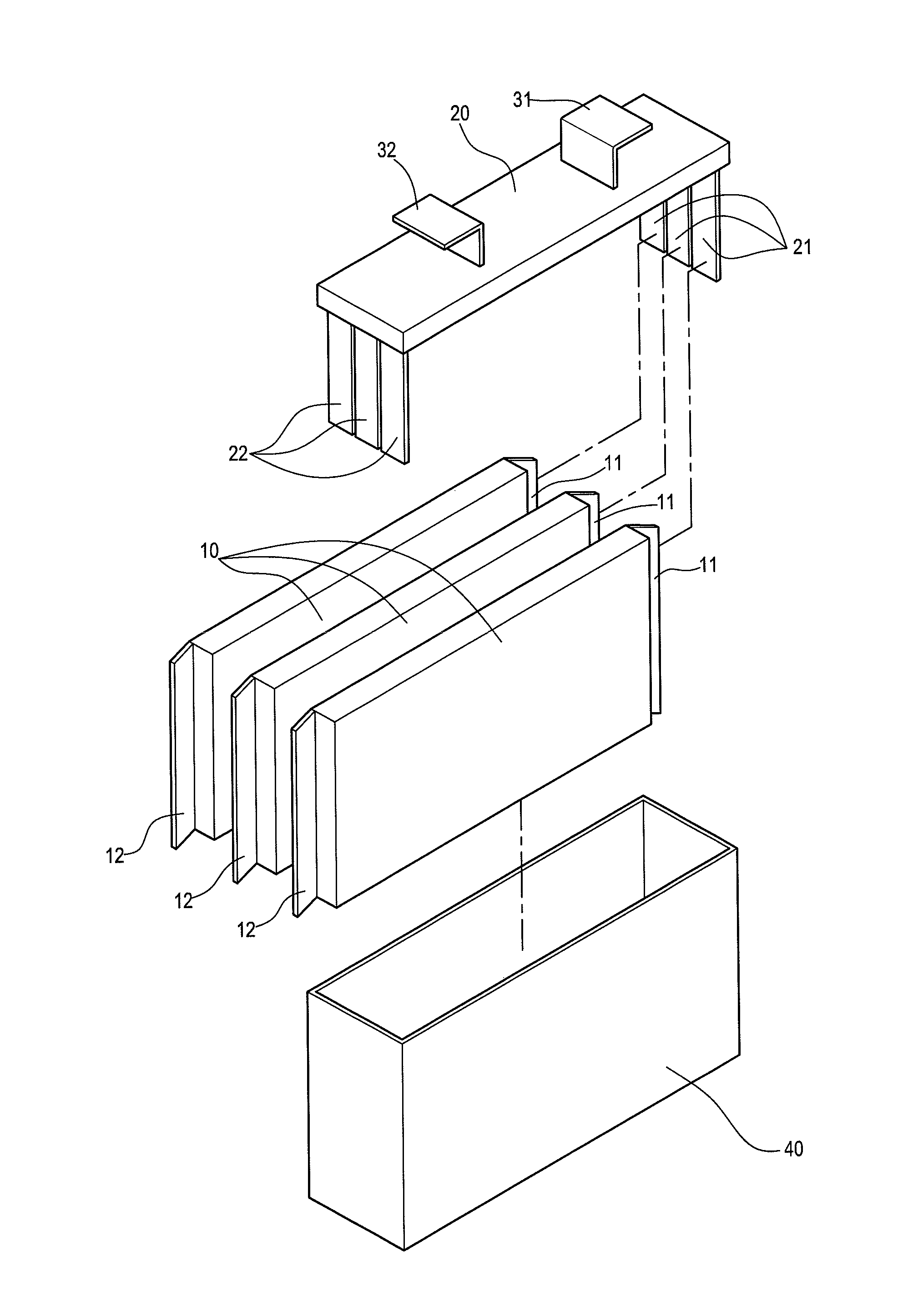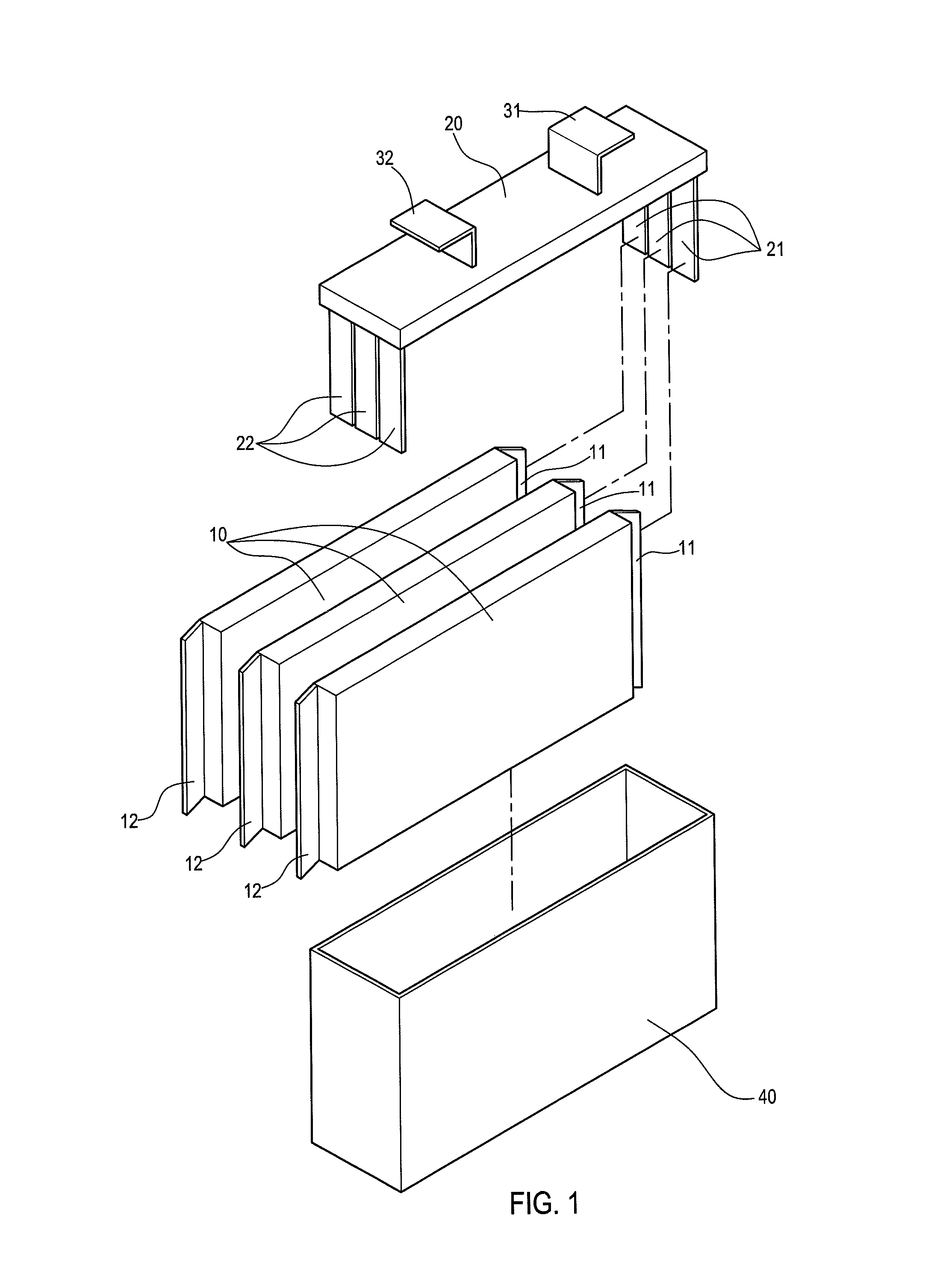Conductive connection structure for secondary batteries
a secondary battery and connection structure technology, applied in the direction of cell lids/covers, cell components, cell component details, etc., can solve the problems of labor and time-consuming and laborious soldering or connecting process, and is not only difficult for anode terminals, and is not easy to smooth assembly, so as to reduce manpower costs
- Summary
- Abstract
- Description
- Claims
- Application Information
AI Technical Summary
Benefits of technology
Problems solved by technology
Method used
Image
Examples
Embodiment Construction
[0020]The structure and the technical means adopted by the present invention to achieve the above and other objectives can be best understood by referring to the following detailed description of the preferred embodiment and the accompanying drawings, but should not be construed as limitations thereof.
[0021]Referring to FIGS. 2 and 3, they show structures of battery cells and a cover plate of the present, the present invention provides a conductive connection structure for secondary batteries, and a rectangular secondary lithium battery is used as an example. The present technique is mainly applied to secondary batteries in which conductive portions 210, 220 disposed under two lateral sides of a cover plate 200 are conductively connect with at least one battery cell 100 (three battery cells 100 are shown in the figures as an example). Each of the battery cells 100 is composed of an anode layer, an insulating layer and a cathode layer superimposed together. An anode terminal 110 and ...
PUM
| Property | Measurement | Unit |
|---|---|---|
| conductive | aaaaa | aaaaa |
| electrically | aaaaa | aaaaa |
| area | aaaaa | aaaaa |
Abstract
Description
Claims
Application Information
 Login to View More
Login to View More - R&D
- Intellectual Property
- Life Sciences
- Materials
- Tech Scout
- Unparalleled Data Quality
- Higher Quality Content
- 60% Fewer Hallucinations
Browse by: Latest US Patents, China's latest patents, Technical Efficacy Thesaurus, Application Domain, Technology Topic, Popular Technical Reports.
© 2025 PatSnap. All rights reserved.Legal|Privacy policy|Modern Slavery Act Transparency Statement|Sitemap|About US| Contact US: help@patsnap.com



